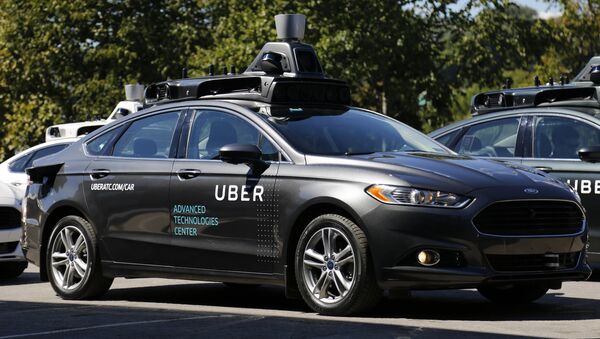Uber launched their San Francisco pilot program on Wednesday morning, exciting believers in autonomous cars and drawing the ire of the California Department of Motor Vehicles (DMV) for skirting regulations. Immediately upon launch, the program attracted controversy after a dashcam operated by competitor Luxor Cab captured an Uber Volvo (one of the models being used in the self-driving pilot) running a red light outside the San Francisco Museum of Modern Art.
The dashcam footage is blurry and low quality, and it is not clear whether the Uber vehicle was being operated by a person when the incident occurred. The Volvos used in the pilot program are required to have a human in the driver seat who can assume control of the vehicle at any time.
Uber insisted Wednesday evening that the car in question was operated by a human when it ran the light. "This incident was due to human error… this vehicle was not part of the pilot and was not carrying customers. The driver involved has been suspended while we continue to investigate," they said in a statement.
While the Luxor Cab footage captured more attention, it was not the only accusation levied at Uber’s San Francisco pilot on launch day. San Francisco journalist Annie Gaus tweeted that morning that a self-driving Uber ran a red light and nearly hit a Lyft vehicle in which she was a passenger. Gaus’s claim has not been substantiated or refuted by Uber.
— Annie Gaus (@AnnieGaus) December 14, 2016
— Annie Gaus (@AnnieGaus) December 14, 2016
The biggest news from Wednesday’s launch was the apparent end of the program, just as it began. AP reported that state regulators have ordered Uber to cease operations of autonomous vehicles in California. State law requires a permit from the DMV to operate "autonomous" cars on streets. Uber claimed that their program could not be defined as autonomous, as their self-driving cars also contained a human operator.
A letter from the California DMV deputy director Brian Soublet read, "if Uber does not confirm immediately that it will stop its launch and seek a testing permit, DMV will initiate legal action, including, but not limited to, seeking injunctive relief." Soublet added that, "the DMV fully supports the advancement of autonomous technologies… but [it] must be tested responsibly."
Among other requirements, a DMV permit requires companies to report every collision in which a self-driving vehicle is involved, as well as every instance in which a human operator takes control of the vehicle. AP reports that providing this information to the public is a headache of paperwork and bad PR that Uber tried to circumvent.
Uber’s San Francisco pilot follows a successful program launched in Pittsburgh, Pennsylvania, in August 2016. There were minor mishaps there as well, including reports of driverless Ubers involved in fender-benders and traveling the wrong way down one-way streets.


